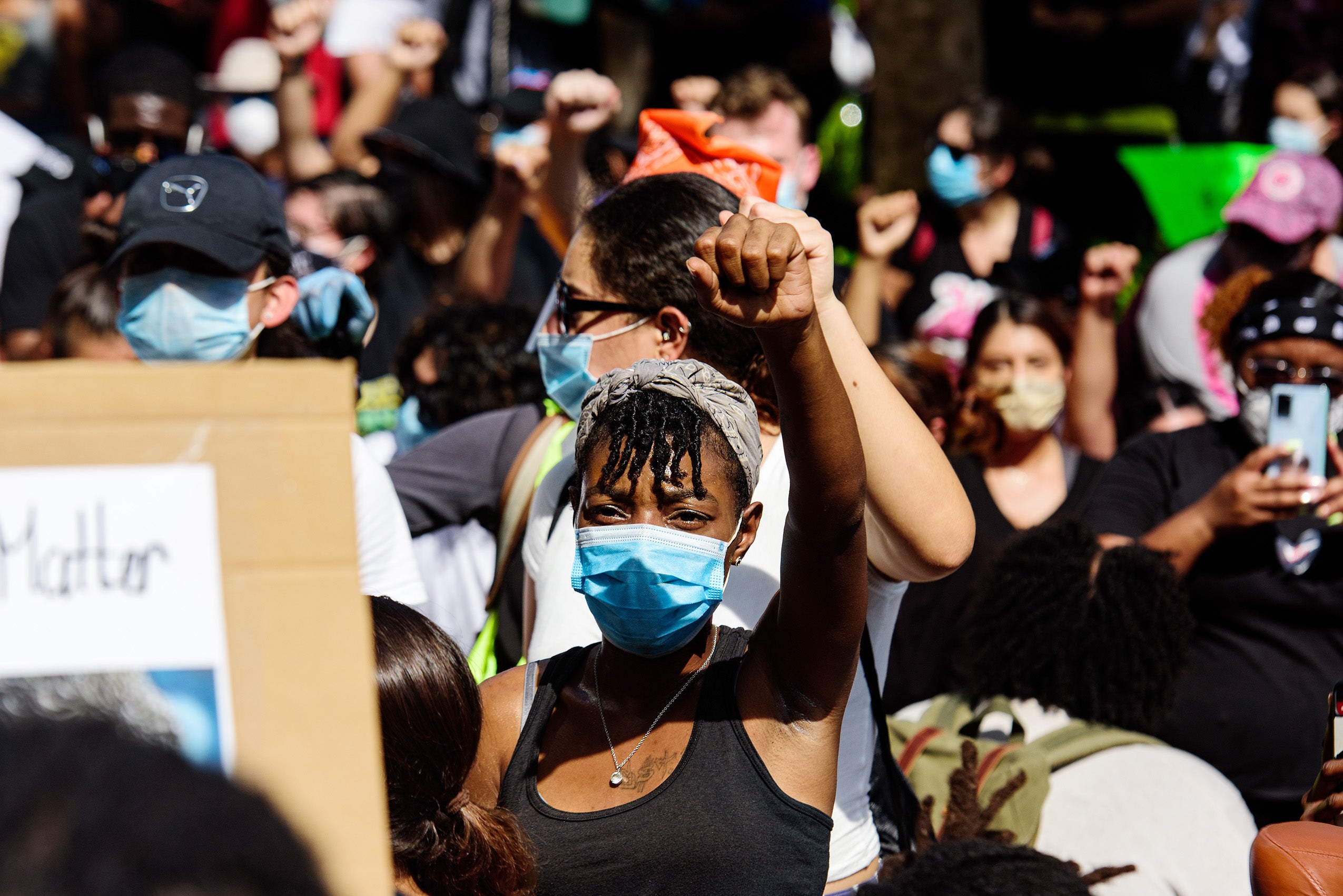The COVID-19 pandemic has laid bare the health disparities that result from racism embedded in our society and systems, including the law. But while the law has created these disparities, it may also provide opportunities to correct them.
An interdisciplinary panel of scholars discussed the relationship between the law, race, and health at an event hosted by the Petrie-Flom Center for Health Law Policy, Biotechnology, and Bioethics at Harvard Law School titled “Understanding the Role of Race in Health: A Moderated Discussion.”
The discussion, held on Sept. 21, kicked off the Center’s fall semester programming, and also marked the launch of an accompanying digital symposium the Petrie-Flom Center is publishing over the course of the next few months on its blog, Bill of Health. The event was moderated by I. Glenn Cohen, James A. Attwood and Leslie Williams Professor of Law and faculty director of the Petrie-Flom Center for Health Law Policy, Biotechnology, and Bioethics at Harvard Law School, and Craig Konnoth, guest editor of the symposium and associate professor of law and director of the Health Law Certificate Program at the University of Colorado Law School.
The focus of these efforts, which will be supplemented with additional programming, including an event slated for February on medical stereotypes and racism in U.S. health care, is to unpack how critical race theories and other strands of racial justice scholarship can inform the law to improve health outcomes among minorities.
Panelist Dayna Matthew, dean and Harold H. Greene Professor of Law at George Washington University Law School, began by describing the stakes of the conversation. “Law is not only complicit, but it is the operative mechanism for structural racism,” she said.
Structural racism “refers to the disadvantage that results from the operation of several interconnected social and economic systems, such as education, employment, credit financing, housing, policing, incarceration,” added Kimani Paul-Emile, professor of law, associate director and head of domestic programs and initiatives at Fordham Law School’s Center on Race, Law & Justice, and faculty co-director of the Fordham Law School Stein Center for Law & Ethics.
“All these systems, although they can have independent effects, they’re often interrelated,” Paul-Emile continued. “The inequality that one system creates can be compounded and reinforced and disadvantaged by the others. And what’s most notable about structural inequality is that it can manifest in the absence of intentional racism.”
Paul-Emile explained that these structural factors explain much of the discourse around racial vulnerability to COVID-19. “When COVID first burst on the scene, many people assumed that the disparate impact we were seeing was because of something biological, and something unique to Brown and Black people that made them uniquely susceptible to the virus,” she said. “But, as we’ve since come to learn, it’s long-standing and, at one-time, state-sanctioned discriminatory practices that increase their exposure and susceptibility to the virus,” such as housing conditions, or the preponderance of minorities working in “essential,” low-wage fields, which puts them at higher risk for exposure to the virus.
Michele Goodwin, Chancellor’s Professor at the University of California, Irvine and founding director of the Center for Biotechnology and Global Health Policy added that pre-existing conditions common among people of color, which contribute to increased mortality from the virus, have their roots in slavery. “Think about an enslaved condition, and the trauma, both physical, and also emotional and psychological, that is placed upon a people who are literally held in chains and shackled,” Goodwin said.
Goodwin then described the effects of the failure of the 13th Amendment to end slavery with its exemption for penal labor.
“These were young black kids who couldn’t pay fines,” Goodwin said. “They paid a physical health price. They paid a psychological health price. In reality, we’ve all been paying the price of that by our failure to come to grips with it and to look at these systems in an honest way. It’s no wonder that there are disparities in healthcare. It’s no wonder that there are the lingering effects of hypertension, high blood pressure, and so much more in Black communities given that history.”
To address these disparities, Matthew said that civil rights laws–currently “under attack”—must be “reinforced and reinvigorated.” She explained, “Restoration of political participation powers that have been removed from the Voting Rights Act; a reinforcement of the Federal Fair Housing Act; and a restructuring, fundamentally, of the way that we pay for public education are the places we must start in order to get at these fundamental causes of political and social determinants of public health inequality.”
Further, she added, we must find a way to redefine health care. “We need to reimburse housing as healthcare, food as healthcare. We need to reimburse interventions that are social as health care and not just medicine and medical care itself,” Matthew said.
“COVID-19 has certainly given another dimension to the phrase Black Lives Matter,” added Samuel Roberts, associate professor of history and of sociomedical sciences at the Mailman School of Public Health at Columbia University. “What is Black life itself? What are our life chances, and how are those constrained? … Generally speaking, the movement itself recognizes and understands and asserts that to say a Black life matters isn’t just that it has the right not to be ended violently and unceremoniously by vigilante police or private citizens, but also that we must take into account health inequities that end our lives because of structural violence.”
Read the symposium, which is updated with new contributions every Tuesday and Thursday, on Bill of Health and watch the event video on YouTube.
